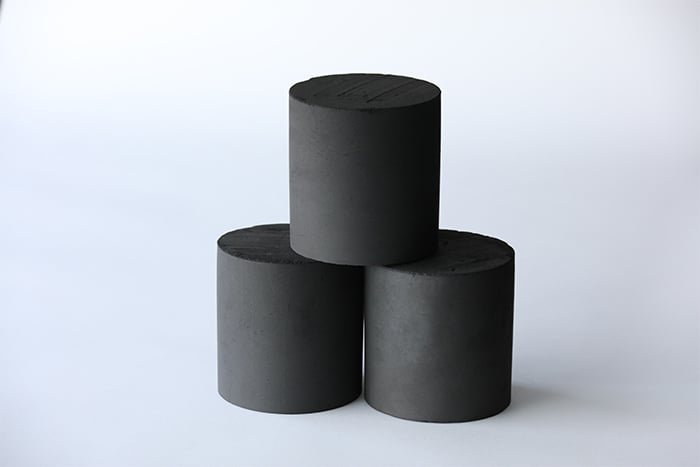Engineers in Melbourne are at the forefront of the global race to develop an affordable rechargeable battery for solar energy storage that doesn’t rely on scarce natural resources. The innovative ‘proton battery’ might one day power our homes, vehicles, and gadgets without the environmental challenges posed by lithium-ion batteries. RMIT University has secured international patents for the latest advancements in this groundbreaking technology.
The battery’s design uses a carbon electrode to store hydrogen derived from water, subsequently functioning as a hydrogen fuel cell to generate electricity. RMIT’s collaboration with the Italian-based automotive component supplier, Eldor Corporation, spans five years, aiming to refine and prototype this technology. Recent enhancements to the proton battery design have positioned it as a carbon-neutral contender against traditional lithium-ion batteries.
Professor John Andrews from RMIT emphasized the need for efficient, affordable, and environmentally friendly storage solutions as the world transitions to renewable energy. The proton battery stands out due to its equitable nature, safety features, and the absence of end-of-life environmental challenges. All components of the proton battery can be rejuvenated, reused, or recycled, setting it apart from other battery technologies.
The latest version of the battery can power multiple small fans and a light for several minutes, showcasing its potential. The battery’s storage capacity has seen significant improvements, now boasting 2.2 wt% hydrogen in its carbon electrode, which is nearly triple that of their 2018 prototype. This storage capacity surpasses other reported electrochemical hydrogen storage systems.
In terms of energy-per-unit mass, the proton battery is on par with commercial lithium-ion batteries but offers enhanced safety and environmental benefits. The primary resource for the proton battery is carbon, which is abundant, universally available, and cost-effective compared to resources like lithium, cobalt, and vanadium. The scarcity of lithium and other metals like cobalt, which are essential for lithium batteries, is a growing concern, making the proton battery a sustainable alternative.
The battery’s recent performance enhancements are attributed to design modifications that boost electrochemical reactions. The proton battery operates by splitting water molecules during charging, producing protons that bond to a carbon electrode. Unlike conventional systems, the proton battery avoids energy-intensive processes like storing hydrogen gas under high pressure. When discharging, the battery releases protons from the carbon electrode, which combine with atmospheric oxygen to form water, generating power in the process.
The proton battery’s efficiency rivals that of lithium-ion batteries, with significantly lower energy losses. The next phase involves scaling up the technology in collaboration with Eldor Corporation, aiming to meet the requirements of various domestic and commercial applications. The ultimate goal is to elevate the system from the watt level to the kilowatt and eventually the megawatt scale.
Similar Posts
The proton battery’s development is backed by peer-reviewed research and funding from both the Australian Renewable Energy Agency (ARENA) and the Victorian Government. The global push towards renewable energy sources necessitates substantial electrical energy storage solutions to maintain a consistent and reliable energy supply. While existing storage technologies offer solutions, there’s a growing need for innovative alternatives that can meet the escalating global demand.
Traditional lithium-ion batteries, despite their popularity, have limitations such as the need for scarce resources, limited lifespans with repeated cycling, and environmental concerns. The proton battery, with its carbon-based electrode, offers a promising solution, eliminating the need for rare metals and providing fast charging capabilities. The proton battery concept is not entirely new, with previous proposals suggesting organic sustainable battery systems that utilize proton transfer and storage in carbon-based electrodes.
The proton battery’s advantages include higher energy densities, safety during stationary or transit phases, and operation at near ambient temperatures and pressures. The battery also benefits from decades of advancements in PEM-based cells, including high proton conductivity and extended lifespans. The absence of scarce metallic minerals in the battery’s electrodes and the potential for scalable modular systems further enhance its appeal.
Recent literature has introduced other proton battery concepts, some of which utilize transport of protons between different quinone-type electrodes or graphene oxides. The proton battery’s design and operational modifications have resulted in a reversible storage capacity of 2.23 wt%H, nearly triple that of earlier designs. This capacity exceeds the highest electrochemical hydrogen storage using an acidic electrolyte previously documented.
The main enhancements include vacuum heating of the carbon hydrogen-storage material and heating the entire cell to 70°C. Another notable modification is the replacement of the oxygen-side gas diffusion layer with a thinner titanium-fiber sheet. These improvements significantly boost the proton battery’s competitiveness against lithium-ion batteries and other alternatives.
Additionally, a method for direct hydrogen gas generation from the hydrogenated carbon electrode in a proton battery has been introduced, expanding its potential applications. The proton battery’s experimental setup is a hybrid system, combining a reversible PEM fuel cell with a hydrogen-storage electrode. During charging, water is split into oxygen gas and hydrogen ions that pass through a Nafion membrane, with these ions stored in the porous carbon electrode.
The research team’s focus has been on efficient hydrogen storage materials and mechanisms, exploring a range of system applications. The authors express gratitude to ARENA for funding support and acknowledge the potential of the proton battery in revolutionizing the energy storage landscape.


















